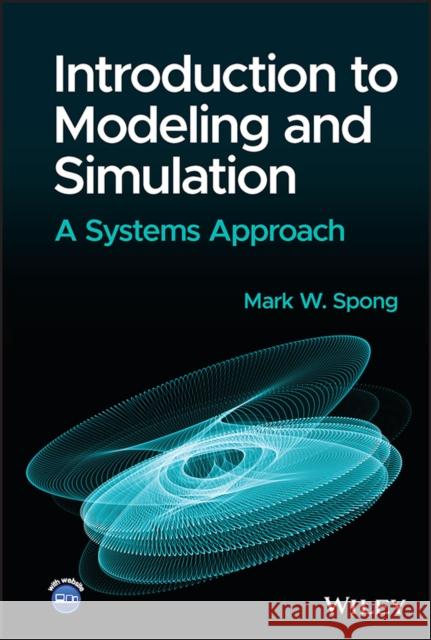Introduction to Modeling and Simulation: A Systems Approach » książka



Introduction to Modeling and Simulation: A Systems Approach
ISBN-13: 9781119982883 / Angielski / Twarda / 2023 / 500 str.
Introduction to Modeling and Simulation: A Systems Approach
ISBN-13: 9781119982883 / Angielski / Twarda / 2023 / 500 str.
(netto: 497,76 VAT: 5%)
Najniższa cena z 30 dni: 518,36
ok. 30 dni roboczych.
Darmowa dostawa!
Preface xiiiAbout the Companion Website xvii1 Introduction 11.1 Introduction 11.1.1 Systems Engineering 11.1.2 The Input/Output Viewpoint 21.1.3 Some Examples 21.2 Model Classification 51.2.1 Static and Dynamic Systems 51.2.2 Linear and Nonlinear Systems 51.2.3 Distributed-Parameter Systems 61.2.4 Hybrid and Discrete-Event Systems 61.2.5 Deterministic and Stochastic Systems 71.2.6 Large-Scale Systems 71.3 Simulation Languages 91.4 Outline of the Text 10Problems 112 Second-Order Systems 152.1 Introduction 152.2 State-Space Representation 192.3 Trajectories and Phase Portraits 222.4 The Direction Field 272.5 Equilibria 302.6 Linear Systems 332.7 Linearization of Nonlinear Systems 412.8 Periodic Trajectories and Limit Cycles 452.8.1 Relaxation Oscillators 452.8.2 Bendixson's Theorem 492.8.3 Poincaré-Bendixson Theorem 512.9 Coupled Second-Order Systems 53Problems 553 System Fundamentals 613.1 Introduction 613.2 Existence and Uniqueness of Solution 613.3 The Matrix Exponential 643.4 The Jordan Canonical Form 673.5 Linearization 713.6 The Hartman-Grobman Theorem 723.7 Singular Perturbations 73Problems 794 Compartmental Models 834.1 Introduction 834.2 Exponential Growth and Decay 844.3 The Logistic Equation 874.4 Models of Epidemics 884.5 Predator-Prey System 95Problems 975 Stability 1015.1 Introduction 1015.2 Lyapunov Stability 1025.3 Basin of Attraction 1095.4 The Invariance Principle 1105.5 Linear Systems and Linearization 113Problems 1166 Discrete-Time Systems 1196.1 Introduction 1196.2 Stability of Discrete-Time Systems 1236.3 Stability of Discrete-Time Linear Systems 1246.4 Moving-Average Filter 1266.5 Cobweb Diagrams 1286.5.1 Cobweb Diagrams in Economics 1306.5.2 The Discrete Logistic Equation 131Problems 1347 Numerical Methods 1377.1 Introduction 1377.2 Numerical Differentiation 1387.3 Numerical Integration 1417.4 Numerical Solution of ODEs 1477.4.1 Euler Predictor-Corrector Method 1507.4.2 Runge-Kutta Methods 1527.5 Stiff Systems 1557.6 Event Detection 1607.7 Simulink 1637.8 Summary 168Problems 1698 Optimization 1738.1 Introduction 1738.2 Unconstrained Optimization 1778.2.1 Iterative Search 1798.2.2 Gradient Descent 1808.2.3 Newton's Method 1848.3 Case Study: Numerical Inverse Kinematics 1878.4 Constrained Optimization 1918.4.1 Equality Constraints 1918.4.2 Inequality Constraints 1968.5 Convex Optimization 200Problems 2049 System Identification 2099.1 Introduction 2099.2 Least Squares 2099.3 Regression 2129.4 Recursive Least Squares 2179.5 Logistic Regression 2209.6 Neural Networks 224Problems 23010 Stochastic Systems 23310.1 Markov Chains 23310.1.1 Regular and Ergodic Markov Chains 24010.1.2 Absorbing Markov Chains 24410.2 Monte Carlo Methods 24910.2.1 Random Number Generation 25010.2.2 Monte Carlo Integration 25310.2.3 Monte Carlo Optimization 25510.2.4 Monte Carlo Simulation 255Problems 25811 Feedback Systems 26111.1 Introduction 26111.2 Transfer Functions 26311.3 Feedback Control 26911.4 State-Space Models 27311.4.1 Minimal Realizations 27411.4.2 Pole Placement 28011.4.3 State Estimation 28311.4.4 The Separation Principle 28511.5 Optimal Control 28811.6 Control of Nonlinear Systems 289Problems 29212 Partial Differential Equation Models 29712.1 Introduction 29712.1.1 Existence and Uniqueness of Solutions 29712.1.2 Classification of Linear Second-Order PDEs 29812.2 The Wave Equation 29912.2.1 The D'Alembert Solution 30012.2.2 Initial-Value Problem 30012.2.3 Separation of Variables 30212.3 The Heat Equation 31012.4 Laplace's Equation 31312.5 Numerical Solution of PDEs 315Problems 31913 Complex Networks 32113.1 Introduction 32113.1.1 Examples of Complex Networks 32213.2 Graph Theory: Basic Concepts 32413.2.1 Graph Isomorphism 32713.2.2 Connectivity 32713.2.3 Trees 33113.2.4 Bipartite Graphs 33213.2.5 Planar Graphs 33313.2.6 Graphs and Matrices 33513.3 Matlab Graph Functions 34113.4 Network Metrics 34313.4.1 Degree Distribution 34313.4.2 Centrality 34713.4.3 Clustering 35013.5 Random Graphs 35413.5.1 ErdQs-Rényi Networks 35413.5.2 Small-World Networks 35813.5.3 Scale-Free Networks 36013.6 Synchronization in Networks 362Problems 366Appendix A Linear Algebra 371A. 1 Vectors 371A. 2 Matrices 373A. 3 Eigenvalues and Eigenvectors 375Appendix B Real Analysis 379B. 1 Set Theory 379B. 2 Vector Fields 380B. 3 Jacobian 381B. 4 Scalar Functions 381B. 5 Taylor's Theorem 382B. 6 Extreme-Value Theorem 383Appendix C Probability 385C.1 Discrete Probability 385C.2 Conditional Probability 386C.3 Random Variables 389C.4 Continuous Probability 391Appendix D Proofs of Selected Results 395D. 1 Proof of Theorem 2.2 395D. 2 Proof of Theorem 5.1 395D. 3 Proof of Theorem 5.5 396D. 4 Proof of Theorem 13.3 397D. 5 Proof of Corollary 13.2 397D. 6 Proof of Proposition 13.2 398D. 7 Proof of Proposition 13.3 398Appendix E Matlab Command Reference 399References 403Index 407
Mark W. Spong, DSc, is Professor of Systems Engineering and Professor of Electrical and Computer Engineering at the University of Texas, USA, where he also holds the Excellence in Education Chair. Professor Spong received his doctorate in systems science and mathematics in 1981 from Washington University in St. Louis, USA. He is a Life Fellow of the IEEE and a Fellow of IFAC. Among the numerous notable awards he has received are the 2011 Pioneer in Robotics Award from the IEEE Robotics and Automation Society, the 2020 Rufus Oldenburger Medal from the ASME, the 2018 Bode Lecture Prize from the IEEE Control Systems Society, the 2016 Nyquist Lecture Prize from the ASME, and the IEEE Transactions on Control Systems Technology Outstanding Paper Award.
1997-2026 DolnySlask.com Agencja Internetowa
KrainaKsiazek.PL - Księgarnia Internetowa









